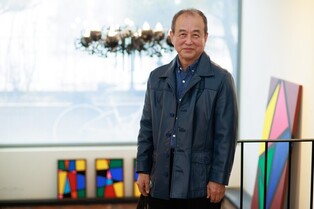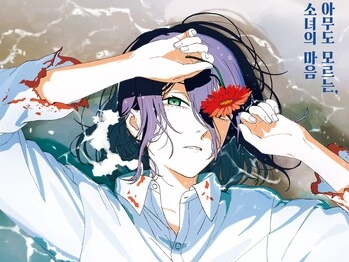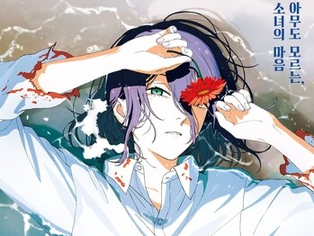Poets have long written poems about reeds. There are many poems expressing melancholy sentiments. Perhaps it's because another year has passed without achieving anything significant... However, there's no need to dwell in melancholy. Upon closer inspection, the waterfront where the reeds grow reveals itself to be a humble yet beautiful habitat for various forms of life. Observing the lively creatures that inhabit this area gives one the strength to face another year.
In poet Shin Kyung-rim's poem "Reeds," there's a line, "Living is quietly weeping inside." With the ongoing economic downturn due to the pandemic, life remains challenging for many working-class people. Perhaps everyone is pretending to live joyful and happy lives. Suncheon, where reeds abound, is not only a quiet place to reflect on the past year but also an ideal destination for solo travel. Suncheon Bay, a paradise of golden reeds, boasts two notable attractions. The most famous spot is near the Yeosan Observation Deck in Suncheon Bay Wetland, while the other is the relatively less known Waon Beach. Waon Beach features an exquisite blend of vast mudflats and golden reeds, connected to the Yeosan Observation Deck by a long walking path.
As the sun sets, walking along the embankment, the sight of reeds swaying in the wind resembles waves approaching. It's truly a golden wave. The entire coastline seems to shimmer in golden hues.
Suncheon is an optimal destination for solo travel. Public transportation is well-developed, with easily accessible buses to Suncheon Bay Wetland upon disembarking from the KTX at Suncheon Station. Suncheon National Garden is currently undergoing extensive preparations for the upcoming year. Thanks to this, there seemed to be a significant influx of visitors to Suncheon Bay Wetland.
The Ecotourism Mecca, Suncheon Bay
Tourists immerse themselves in the serene ambiance of early winter reeds, enjoying their time. However, the purpose of the author's visit, after a long time, was somewhat different.
I met Dr. Hwang Sun-mi from the Suncheon Bay Conservation Team. Introduced by bird specialist photographer Lee Jong-ryul, Dr. Hwang greeted me with the aforementioned expression. "Welcome. Currently, 6,000 black-faced spoonbills have arrived at Suncheon Bay." I was surprised at the mention of black-faced spoonbills. As the 228th natural monument, black-faced spoonbills are globally recognized as a rare species with only around 18,000 remaining worldwide. I immediately borrowed a bicycle from the research institute and headed with Dr. Hwang to the rice paddies where the black-faced spoonbills were feeding. About a 10-minute bike ride from the entrance of Suncheon Bay Wetland, the rice paddies were filled with black-faced spoonbills feeding.
What's unique is that residents guard the rice paddies where black-faced spoonbills feed. They ensure the safety of the birds' feeding activities and have erected tall reed barriers around the area to protect them. At the end of the barrier, wildlife photographers have set up cameras with lenses exceeding 800mm to capture the black-faced spoonbills tirelessly. Some are observing the spoonbills through binoculars.
Between 2008 and 2009, when Suncheon Bay Conservation activities began in earnest, there were only about 300 black-faced spoonbill individuals. Thanks to the consistent conservation efforts by Suncheon City, this place has now become a mecca for various migratory birds. Last year, the number of black-faced spoonbills visiting Suncheon Bay exceeded 10,000.
Photographer Lee Jong-ryul remarked, "Last year, due to the avian influenza outbreak in Japan, the black-faced spoonbills flocked to Suncheon Bay because no artificial feed was provided," adding, "There's ongoing discussion about how much feed should be provided at Suncheon Bay, and the maximum number of black-faced spoonbills that can be accommodated here is around 6,000." After confirming the feeding activities of the black-faced spoonbills, we quietly withdrew to avoid disturbing them.
Jogok-dong Railroad Village
Suncheon boasts a "Railroad Office Village" with many stories related to railways and trains. In the 1930s during the Japanese occupation period, Suncheon became the site of the opening of the Jeolla Line and the establishment of a railroad office to ensure the residential stability and facility management of the Suncheon Railway Office employees, leading to the construction of the Railroad Office, which currently serves as public rental housing, in the present-day Jogok-dong.
Formed in a checkerboard pattern with 152 households, many have been newly built or renovated. The Railroad Office Village, originally established by the Japanese, has transformed into a railroad cultural village over the past 80 years through the efforts of local residents who have contributed to the development of the Korean railway.
Efforts by the residents' committee have been made to preserve the significance of Jogok-dong imbued with railroad and train history, including the publication of brochures on the village's origins and the oral history of the Railroad Office Village. Various programs such as village design schools for creating a railroad culture village, creating railroad murals, and alley gardens have been implemented.
The quaint yet neatly organized village evokes a sense of warmth. Some roofs have three attached lucky symbols, indicating a household blessed with fortune. Despite being an old village, each house has natural gas pipelines, indicating a high standard of living while maintaining a tranquil atmosphere. In one corner of the village, there's a spring where water gushes out, resembling a laundry area from the past. The sight of fresh water still flowing was fascinating. An interesting fact was that safety helmets were used instead of bowls. It somehow felt like safe water.
Cultural Street
The Hyangdong area was once filled with boarding houses and single-room accommodations, but it became a forgotten space as young people gradually moved away. However, since the Suncheon City Residential Urban Regeneration Project began in 2014, this area has transformed into a new cultural space. Instead of focusing on renovating houses, efforts were made to revitalize the neighborhood with a focus on ecology, creating spaces for residents to communicate by establishing "neighborhood cousin" gardens in the surrounding areas and streets.
By walking slowly, one can discover another aspect of the city. The stories passed down by residents over a long period are still present. Each small alley is adorned with distinctive signs and decorations, making it a place worth exploring.
Particularly impressive was the Suncheon Creative Arts Village building. The second floor of the building serves as artists' studios, while fresh green cabbages grow in the front garden. In the alley in front, there were artworks made from various discarded electrical devices, such as sculptures of dogs and cats, which I found particularly endearing. It felt much more creative than the common graffiti streets found anywhere else in Korea.
Suncheon Drama Set
One of the easily accessible attractions when traveling in local areas is a drama set. Suncheon also has its own drama set. Upon passing through the entrance, one can easily feel transported back several decades, almost like riding a time machine. The Suncheon Drama Set replicates the outskirts of Seoul, Dal-ne, and Suncheon town from the 1960s to 1980s. Approximately 70 video works, including dramas like "Pachinko," "Love and Ambition," "East of Eden," and "King of Baking, Kim Takgu," have been filmed here.
Because of this, it's easy to see Seoulites among the visitors feeling extremely delighted. This place replicates the atmosphere of Bangchon Village in Bongcheon-dong, Gwanak-gu, Seoul. Here, visitors can experience programs with a retro atmosphere such as wearing old school uniforms and exploring archaeological sites.
There was one drama signboard that pleased all middle-aged visitors. It was for the MBC drama "East of Eden." This drama, which recorded an average viewership rating of 29.8%, portrayed the intertwined fate and revenge of two men born in the same hospital. It featured heartthrobs of the time like Song Seung-heon and Yeon Jung-hoon, garnering significant attention.
According to a survey by the Korea Film Industry Strategy Center, the economic contribution of this place, which combines filming and tourism, amounts to several trillion won. Just before the pandemic, it was announced that the Suncheon Drama Set had contributed 1.868 trillion won to the local economy over a decade.
Sublime Experience at Yongsan Observatory
The day after touring Suncheon city, I met Dr. Hwang again. He personally guided us through the local ecological environment in his car. Our first stop, guided by him, was Dongcheon, a small stream connected to Suncheon Bay. As we wandered around Dongcheon, we encountered numerous birds. Luckily, we came across a flock of Yellow-billed Buntings. These natural monument No. 205 birds were engaged in feeding activities, dipping their long beaks into the water and searching for food.
In the afternoon, we headed to Yongsan Observatory. This place offers a view of the beautiful Suncheon Bay and the sunset. The Yongsan Observatory, which we hadn't visited in a long time, was crowded with people. We were surprised by the countless visitors. Among them were amateur photographers discussing stories about Black-faced Spoonbills. It turns out that thousands of Black-faced Spoonbills have migrated here. We were amazed at their accurate knowledge of the latest information.
Dr. Hwang had a smile on his face. Eventually, the Black-faced Spoonbills, which had been feeding in the marsh, began to move. After their feeding activity, they moved to the tidal flats to rest. Against the backdrop of the crimson sunset, the cries of thousands of Black-faced Spoonbills flying away were truly moving. The symphony of cries from the flock of Black-faced Spoonbills heard in surround sound was like a grand orchestral performance created by nature. It was so moving that it sent shivers down our spines, completely dispelling any end-of-year melancholy.
Seocheon Reed Fields
I set off from Seoul to visit Seocheon for the first time. As I drove out of the city, I noticed patches of brown reeds hanging on the roadside walls. The weather that day was quite cold, to the point where my hands felt numb. The approach of winter and the nearing end of the year became palpable.
After about three hours, I arrived in Seocheon. As I reached the vicinity of Hansan-myeon's Sinseong-ri Reed Fields, one of the four major reed fields in Korea, reeds and tall grasses began to sporadically appear along the roadside. Upon reaching my destination, I was greeted by a landscape of tall plants swaying as if waves on a blue-tinted river. Dozens of cars were already parked in the lot, and nearby residents were selling crops such as cabbage and peanuts, which they had grown themselves.
The Sinseong-ri Reed Fields stretch across the Geumgang Estuary, where Chungnam Seocheon and Jeonbuk Gunsan meet, extending about 1 km in length. A large signboard at the entrance reads "The Gala of Geumgang's Breath and Reed Fragrance," welcoming visitors. Walking along the trail, clusters of reeds became more visible. They stood about 3 meters tall, with very light brown tufts hanging from the ends of their stems.
The sound of rustling reeds in the wind never ceased in the reed fields. Clumps of lower grasses swayed here and there, shimmering silver in the sunlight. Beyond them flowed the Geum River, its blue waters meandering leisurely. The blue sky, the color of the river, and the swaying reeds and grasses harmonized strangely.
Nayeon-ok, a cultural and tourism guide who accompanied our team locally, shared, "Before the reed grains ripened, residents used to cut the tender stems, boil them in salt water, and make 'Galggotbi' (brooms made from reed flowers)." She added, "Even today, some visitors with nostalgic feelings visit nearby villages to seek out Galggotbi." Despite the solitude that may be associated with reed fields, the voices of people bustling about were never-ending. Famous as a filming location for movies like "Joint Security Area (JSA)" and TV dramas like "Chuno," and offering scenic views along the trails and observatories, the reed fields attract many visitors. The quaint "Reed Literature Trail" and charming photo zones shaped like windows also caught my attention.
Blue Janghang Pine Forest and Maengmundong
About a 30-minute drive from Sinseong-ri Reed Fields is the Janghang Pine Forest Forest Bathing Site. Above, tall blue pines stretch out, while below, green Maengmundong grasses are spread out like a carpet. According to a forest information board, this area was established by students of Janghang Agricultural High School in 1954, who planted two-year-old Korean pine trees (Pinus koraiensis) to protect against sandblasting and wind along the seaside.
The verticality of the straight or bent Korean pine trunks gave a peculiar sense of stability to the viewer. This feeling was enhanced by their familiarity as common trees. The green leaves of Maengmundong were not supporting actors but rather the main stars, harmonizing with over 12,000 trees. The pine forest complemented the clear weather and fresh air perfectly.
Further inward, a 15-meter-high, 250-meter-long skywalk came into view. Walking on the skywalk felt like walking on pine trees, but as I moved forward, the sea suddenly spread out before me.
Mudflats and Migratory Birds
Since Janghang Pine Forest Forest Bathing Site is located by the sea, visitors naturally encounter mudflats. Nearby, there is a large signboard that reads "UNESCO World Natural Heritage Seocheon Mudflats." Including Seocheon, the "Korean Mudflats," which encompasses part of Korea's southwestern coastal mudflats, was registered as a UNESCO World Natural Heritage Site in 2021.
Our team also briefly visited the Seon-do Village Mudflat Experience Village, which is about a 30-minute drive away. We encountered visitors picking clams on the vast mudflats. There were yellow mudflat experience buses with roofs, and people were seen along the way. Seocheon, known as a destination for ecological tours, is also a prime spot for observing migratory birds. As we passed through the Do-ro-tga near the Geum River, we saw flocks of cranes resting on harvested fields. It was a sight that elicited awe. Near the parking lot of Janghang Pine Forest Forest Bathing Site, we also witnessed elegant white egrets in the wetlands.
The Geum River Estuary is known as the paradise of migratory birds. Every year, ducks and geese, among others, winter here, making it an important habitat for waterbirds. The expansive mudflat viewing and diverse birdwatching offered an unexpected encounter with nature before departing from Seocheon. The abundance of sights was even more welcome because it was unexpected. We could also pass by the Geum River levee connecting Seocheon and Gunsan and the Geumgang Galmun Bridge.
Sunset at Maryangjin Port
I witnessed two sunsets while traveling back and forth in Seocheon. The first evening's sunset was at a marsh near the parking lot of Janghang Pine Forest Forest Bathing Site. I had stopped the car to see the birds in the marsh, and it happened to be the time before sunset. Nearby, reeds and grasses swayed in the wind, and across from us, we could see the old Janghang Ironworks chimney. The setting sun gradually descended against this backdrop, its twilight glow blending seamlessly with the reeds.
On the second day, we visited Maryangjin Port, famous for its views of both sunrise and sunset. The port juts out into the sea, creating a long pier. Our team visited in the afternoon to witness the sunset. As we gazed around, our eyes followed the scattered clouds in the sky, small islands in the nearby sea, ships anchored in the harbor, and the nearby red lighthouse. While enjoying the scenery, the sun, which had been quite high, began to descend.
As the time approached around 5:20 to 5:30 p.m., the sun began to cast its light on the sea's surface. People who had come to watch the sunset began to appear from somewhere. After exchanging greetings, we watched the setting sun, reflecting on the past year. The sunset gradually dyed the surroundings with its colors. It was a natural landscape, rich yet promising for tomorrow.
(C) Yonhap News Agency. All Rights Reserved


















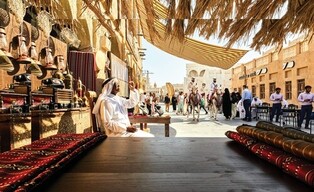



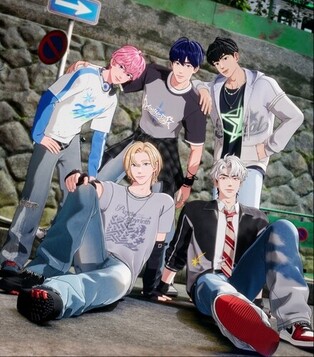
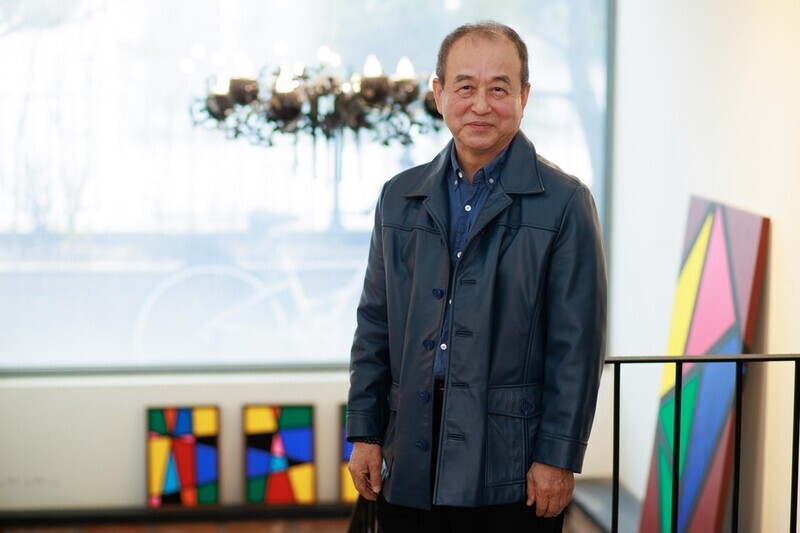

![[가요소식] 보이넥스트도어, 신보로 3연속 밀리언셀러 달성](/news/data/20251025/yna1065624915905018_166_h2.jpg)
